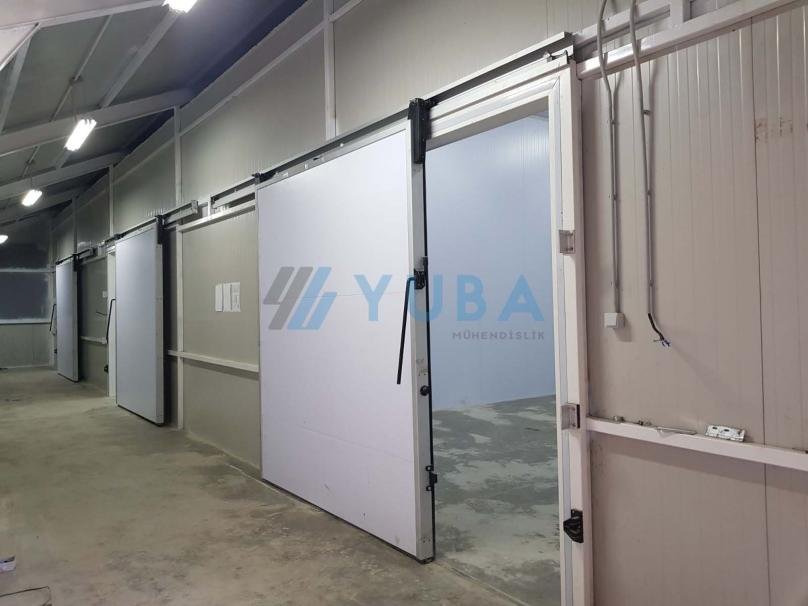Cold Room Doors
6 July 2024Understanding Temperature Ranges in Frozen Storage Rooms
6 July 2024Temperature ranges are as follows:
Cold Storage (-5 °C / +8 °C)
Cold storage rooms, cold rooms, are areas isolated from external environmental conditions where ideal air is created with the help of cooling devices to preserve the freshness of products and extend their shelf life.
The primary purpose of using a cold storage or cold room is to maintain the freshness of products for as long as possible, as they were on the day they were produced, without any deterioration or spoilage in appearance.
Depending on the product to be preserved and the purpose of storage, they are kept or stored at different temperature regimes.
-5 °C / +8 °C is one of the most common temperature ranges for cold storage. This temperature range typically includes +2 °C / +8 °C, which is defined as a chiller room. The critical temperature level is determined and adjusted according to the type of product to be stored in cold rooms. We manufacture and construct chiller rooms to be used for various types of products. In a chiller room, fresh fruits and vegetables, fresh meat and poultry products, dairy products, fresh fish and seafood, bakery items, medical drugs, and chemicals are preserved.
Cold Storage Temperature Ranges and Storage Methods
Cool Storage (+5/+15°C)
This is the temperature range for preserving certain special food items (green peppers, tomatoes, bananas, etc.) and food processing areas.
Cold Storage (-5/+5°C)
Most fresh food products are stored within this temperature range.
Frozen Storage (-15/-25°C)
All frozen foods are stored within this temperature range. Frozen storage is the process of maintaining the temperature of products, which were previously quick-frozen to a core temperature of -18°C.
Shock Freezing (-30/-45°C)
Shock freezing is not a type of storage. Shock freezing is the process of rapidly reducing the core temperatures of fresh products to -18°C within 4-7 hours.

